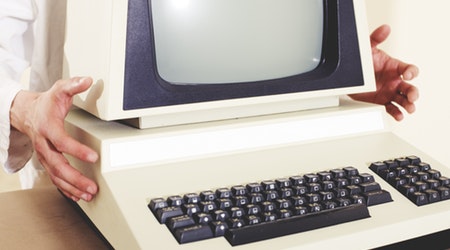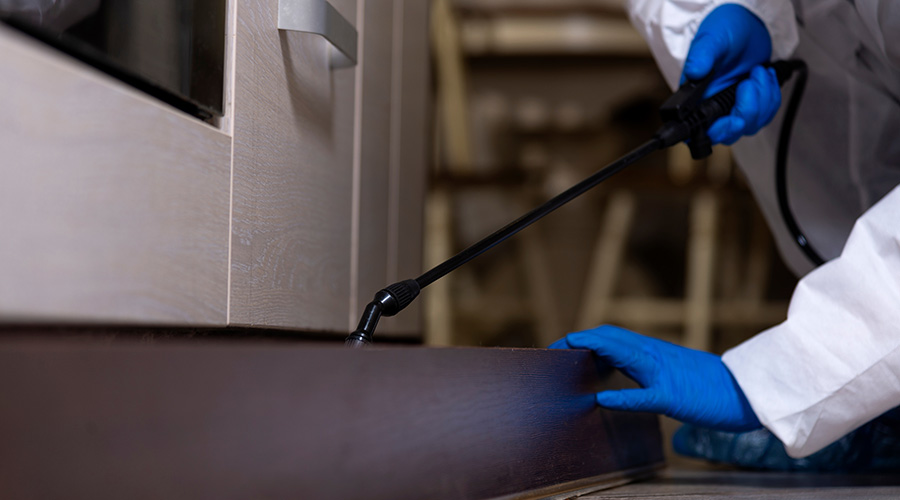Electronic Waste: Reuse, Recycle, or Dispose?
Decision making starts with understanding regulations and applying a hierarchy for managing hazardous materials
As organizations continue their efforts to go green, the pressure is mounting for managers to help reduce waste streams and maximize reuse and recycling within facilities. One area in which managers can demonstrate their commitment to environmentally friendlier facilities is in managing electronic waste.
Electronic waste includes computers, monitors, printers, photocopiers, telephones, cell phones, fluorescent lamps, and batteries. A preferred hierarchy exists for handling and managing electronic-equipment waste: first reuse, next recycle, then dispose.
Understanding the federal and state regulations and guidelines designed with this disposal hierarchy in mind will help managers decide which process is best for their organizations.
Equipment Reuse
The U.S. Environmental Protection Agency (EPA) published a policy in June 2002 in the Federal Register that noted, “because obsolete electronics are often capable of reuse, they are not considered wastes until a decision is made that they cannot or will not be reused.” Qualified individuals, such as resellers or recyclers, usually make this decision. This guidance allows managers to collect unwanted electronics without regard to waste rules.
Computers and other electronic equipment less than five years old generally qualify for reuse. A manager’s initial step is to determine if one department’s equipment might benefit other departments within the organization.
The second option is to donate used electronics to a refurbisher or reseller of used equipment, first making sure to understand the types of products the refurbishing firm accepts. Managers also need to remember to include accessories, such as cords, cables, modems, the mouse, keyboards, speakers, software, printers and ink cartridges.
These companies can ensure the equipment is operational and handle recycling or disposal of waste materials refurbishing might generate. An electronics-refurbishing firm also can make proper upgrades to optimize the equipment for use.
The last option for managers is to donate electronic equipment directly to a not-for-profit charity or school.
Recycling Review
Facilities that collect and send used electronic equipment for recycling generally are not considered waste generators and, as a result, typically avoid hazardous-waste liability found under the Resource Conservation and Recovery Act (RCRA). Most regulations either classify electronics as a non-waste or a non-hazardous waste.
Electronic wastes, such as batteries, fluorescent lamps, and other mercury-containing devices, have been reclassified by state and federal agencies as universal wastes, which allows for special control to treat or recycle these materials.
When considering recycling, managers first should check to see whether the product’s manufacturer or supplier offers some type of take-back program. The EPA offers a partnering program entitled Plug-In To eCycling. This program — a partnership among EPA and electronics manufacturers, retailers, and service providers — offers opportunities to donate or recycle used electronics. For links to this and other resources, see the accompanying article.
As a final option, managers can arrange to have used or unwanted electronics taken directly to a recycling firm. Electronics recyclers use a variety of processing methods, including:
•brokering by matching buyers and sellers
•reselling whole units
•remanufacturing or refurbishing equipment
•disassembling electronics into parts and subassemblies
•material recovery by physical separation to capture plastics, metals, glass, heavy metals, etc.
•material processing, such as shredding and grinding
•donating electronics to school systems and not-for-profit organizations.
Some recyclers accept electronic equipment for free, while others will charge a fee for their services. But if a fee is involved, it usually will outweigh the costs of proper disposal.
A Closer Look: Universal Waste
In 1995, EPA enacted the universal waste rule to exempt certain widely generated waste products — such as thermostats, batteries, and fluorescent lamps — that contain hazardous materials from having to meet RCRA’s hazardous-waste requirements. EPA’s universal waste regulations streamline hazardous waste management standards for federally designated universal wastes.
EPA regulations govern the collection and management of these types of wastes, facilitating environmentally sound collection and proper recycling or treatment. EPA’s primary goal for the universal waste program is to encourage recycling of batteries, mercury-containing equipment, and lamps. But handlers can send their waste for disposal and still remain subject to the universal waste regulations.
To be covered under the universal-waste program, these items must first be identified as hazardous waste. Items that still have product value and are being used are not wastes and, therefore, would not be subject to RCRA. Wastes excluded from the RCRA definition of solid or hazardous wastes also are not subject to the universal-waste program.
Only material identified as a hazardous waste that meets the definition of battery, mercury-containing equipment, or lamp in these regulations can be managed under universal waste regulations. Here’s a closer look at these product categories:
Batteries. Batteries contain heavy metals, including nickel cadmium, alkaline, mercury, nickel-metal hydride and lead acid, which can pollute the environment if not properly discarded. The universal-waste regulations define a battery as “ a device consisting of one or more electrically connected electrochemical cells that are designed to receive, store, and deliver electrical energy.” Also included in the definition are unbroken batteries from which the electrolyte has been removed. Many batteries classified as hazardous waste are subject to the universal waste regulations.
Facilities that generate, transport, regenerate, collect, and store spent lead-acid batteries before reclamation but do not perform the actual reclamation are not subject to hazardous waste regulation. EPA established those provisions to encourage battery recycling. But batteries containing other heavy metals can be classified as universal or hazardous wastes.
Lamps. Lamps often exhibit the toxicity characteristic for mercury or lead, making them a characteristic hazardous waste when discarded. A universal waste lamp is defined as the bulb or tube portion of an electric-lighting device. Common types of universal waste electric lamps include but are not limited to fluorescent, high-intensity-discharge, neon, mercury vapor, high-pressure sodium, and metal halide.
Some manufacturers of fluorescent tubes produce low-mercury lamps not considered a hazardous waste, since they can pass the toxicity characteristic leaching procedure (TCLP) test for mercury.
Under federal regulations, the TCLP determines if a lamp is a hazardous waste. A low-mercury bulb can contain 3.5-4 milligrams (mg) of mercury, compared to a standard fluorescent bulb that contains 8-14 mg. Technicians can identify these lamps by the green end caps or green etchings.
But the EPA encourages the recycling of all mercury-containing lamps, regardless of the mercury content. Some states require the recycling of all mercury-containing lamps or managing them as a hazardous waste, regardless of mercury content.
Managers might be able to find out more about the regulatory status of mercury-containing lamps by contacting the manufacturer. But some states require facilities to test their lamps to determine the type of hazard they present.
Under federal and state laws, the ultimate responsibility for determining whether a lamp is hazardous lies with the generator, not the manufacturer. If organizations do not test mercury-containing lamps to prove them non-hazardous, managers should assume they are hazardous waste and make decisions accordingly.
Cathode ray tubes (CRT). The glass in these video-display components of televisions and computer monitors typically contains enough lead to require managing it as hazardous waste under certain circumstances. According to the EPA, used or broken CRTs are not regulated as hazardous waste as long as they meet the following conditions:
•Containers are clearly labeled regarding contents.
•CRTs are safely transported in containers designed to minimize releases.
•CRTs are stored in a building or container designed to minimize releases.
•CRTs are stored onsite less than one year before recycling.
Jeffery C. Camplin, CSP, CPEA — mundycamp@aol.com — is president of Camplin Environmental Services Inc. in Rosemont, Ill.
Buying Green
Smart purchasing can reduce electronic waste and promote recycling. The following steps can help managers take green considerations into account when purchasing electronic equipment:
•Lease electronic equipment.
•Consider refurbished computer equipment over new equipment.
•Look for easily upgradeable equipment.
•Buy products that use recycled materials.
•Select products with recyclable components.
•Use rechargeable batteries instead of single-use batteries.
•Use batteries with lower levels of mercury or other heavy metals.
•Specify low-mercury lighting components.
•Substitute light-emitting diode (LED) technology for mercury-containing lighting where feasible.
• Buy from manufacturers that will take back electrical-equipment waste.
— Jeffery C. Camplin |
Related Topics:












